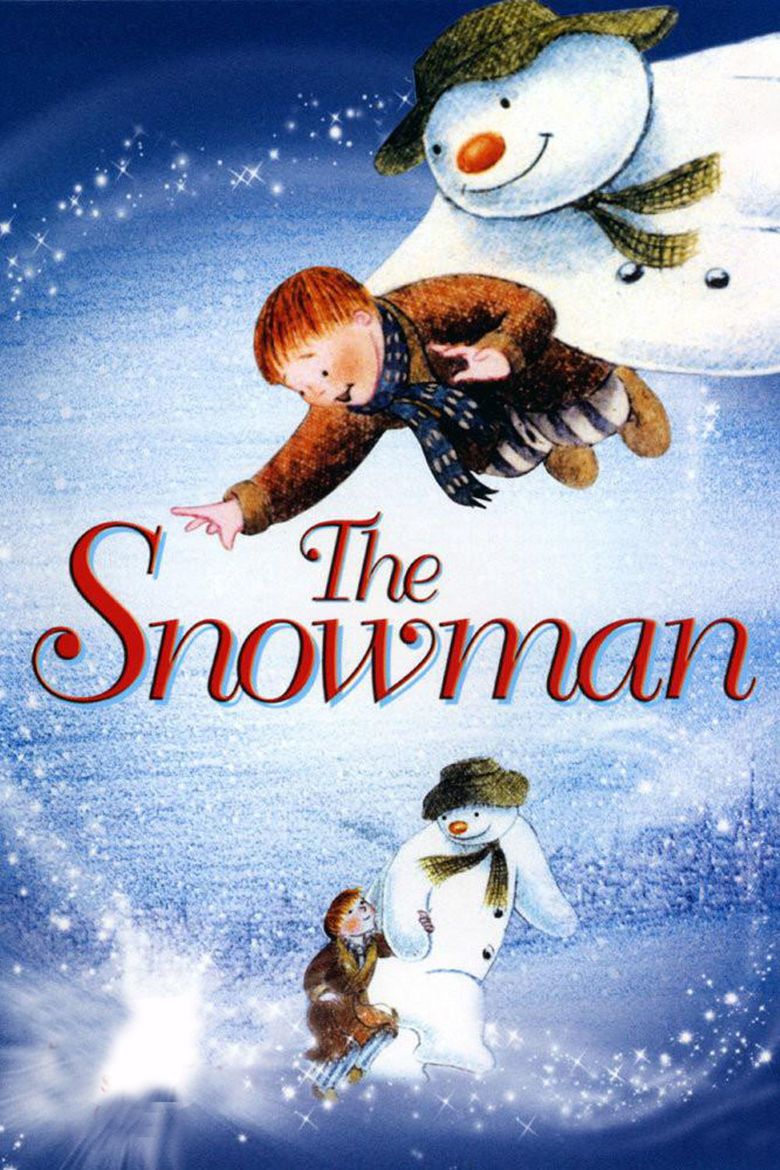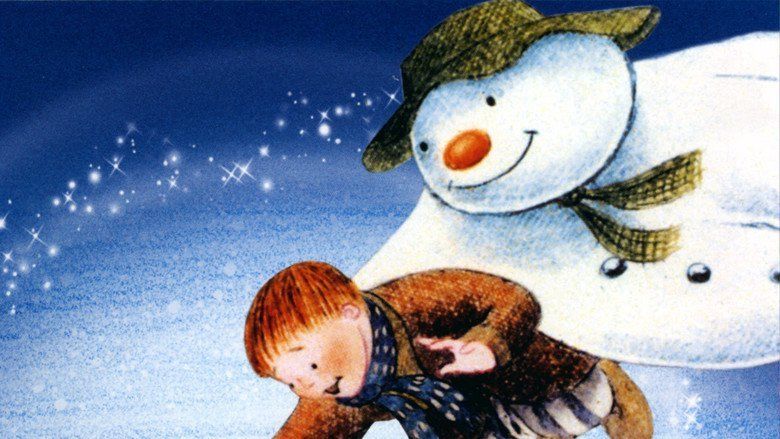The Snowman
8.4 /10 1 Votes8.4
First episode date December 24, 1982 | 8.2/10 IMDb Genre Animation, Short, Adventure Duration Language English | |||||||||||||||||||||||||||||||||
 | ||||||||||||||||||||||||||||||||||
Adapted from The Snowman Shaped Board Book Similar movies The Nightmare Before Christmas , The Santa Clause , Elf , The Santa Clause 2 , How the Grinch Stole Christmas , A Christmas Tree Miracle | ||||||||||||||||||||||||||||||||||
The snowman 1982 with original introduction
The Snowman is a children's picture book without words by English author Raymond Briggs, first published in 1978 by Hamish Hamilton in the United Kingdom, and published by Random House in the United States in November of the same year. In the UK, it was the runner up for the Kate Greenaway Medal from the Library Association, recognising the year's best children's book illustration by a British writer.
Contents
- The snowman 1982 with original introduction
- Animated television special
- Plot
- Alternative beginnings
- Production notes
- 2012 sequel The Snowman and the Snowdog
- Book
- Stage version
- Video game
- References

In the US, it was named to the Lewis Carroll Shelf Award list in 1979. The book was adapted into a twenty six minute animated television special in 1982, which debuted on Channel 4 in the UK on 26 December. It was nominated for an Academy Award for Best Animated Short Film. The animated special became prominent in British popular culture and its showings have since become an annual festive event.
Animated television special
The Snowman was adapted as a twenty six minute animated television special, by Dianne Jackson for the fledgling British public service Channel 4. It was first telecast on 26 December 1982, and was an immediate success. It was nominated for the Academy Award for Best Animated Short Film and won a BAFTA TV Award, out of two nominations.
The story is told through pictures, action and music, scored by Howard Blake. It is wordless like the book, except for the song "Walking in the Air". In addition to the orchestral score, performed in the film by the Sinfonia of London, Blake composed the music and lyrics of the song, performed by a St Paul's Cathedral choirboy Peter Auty.
The special ranks #71 on the 100 Greatest British Television Programmes, a list drawn up by the British Film Institute in 2000, based on a vote by industry professionals. It was voted #4 in UKTV Gold's Greatest TV Christmas Moments. It came third in Channel 4's poll of 100 Greatest Christmas Moments in 2004.
Plot
"I remember that winter because it had brought the heaviest snow I had ever seen. Snow had fallen steadily all night long and in the morning I woke in a room filled with light and silence, the whole world seemed to be held in a dream-like stillness. It was a magical day... and it was on that day I made the Snowman."
A boy builds a snowman one winter's day. That night, at the stroke of twelve, the snowman comes to life. He and the boy play with appliances, toys and other bric-a-brac in the house, all while keeping quiet enough not to wake the boy's parents.
The two go for a ride on a motorcycle, disturbing many animals; its engine heat affects the insides of the Snowman's thighs, and he cools off in the freezer. Later they take flight over the boy's village, then the Royal Pavilion and Brighton Pier, and then out over the ocean and north along the coast of Norway. They continue through an arctic landscape and into the aurora. They land in a snow-covered forest and join a party of snowmen. They meet Father Christmas with his reindeer, who gives him a scarf with a snowman pattern.
The morning after the return journey, the sun has come out and the boy wakes up to find the snowman has melted. The boy reaches into his pocket and finds the snowman scarf given to him by Father Christmas.
Alternative beginnings
After the initial showing on Channel 4, and in its initial showings on television in the United States, an alternative introduction was sometimes used. Instead of Raymond Briggs describing how much it had snowed the winter he made The Snowman, while walking through the field that morphed into the animation of the same landscape, David Bowie was shown reciting a different speech after walking into the attic of 'his' childhood home and discovering a scarf in a drawer and then telling the same story.
This scarf closely resembles the one given to the boy towards the end of the film. The Universal DVD The Snowman & Father Christmas (902 030 – 11), released in the United Kingdom in 2000, uses the Bowie opening. (The Bowie intro is actually missing on some Sony DVDs, despite being featured on the packaging.)
To celebrate the film's twentieth anniversary, Channel 4 created an alternate opening directed by Roger Mainwood, with Raymond Briggs' interpretation of Father Christmas recounting how he met the boy as well as mentioning how the heavy snow from that winter had him grounded. Father Christmas is voiced by comedian Mel Smith. This version is also cropped to 16:9 widescreen.
Channel 4 used this opening from 2002 until Mel Smith's death in 2013, when the Bowie introduction returned, returning the film to its original aspect ratio. The thirtieth anniversary DVD lacks any opening but includes all three openings as a bonus feature.
Production notes
The song "Walking in the Air" is sung in the film by chorister Peter Auty, who was not credited in the original version. He was given a credit on the 20th anniversary version. The song was covered three years later by Welsh chorister Aled Jones in a single which reached #5 in the charts in the United Kingdom. Jones is sometimes incorrectly credited with having sung the song in the film.
Though the boy in the book is unnamed, in the film he is named "James". This is clear on the tag for the present he receives from Father Christmas. The name was added by Joanna Harrison, one of the animators, as it was her boyfriend's (later her husband) name. Additionally, Father Christmas mentions the boy's name in the twentieth anniversary opening.
In the film, the boy's home seems to be in the South Downs of England, near to Brighton; he and Snowman fly over what appears to be Brighton; the Royal Pavilion and Palace Pier are clearly depicted. Later in the film, the tag on his present confirms this. (Raymond Briggs has lived in Sussex since 1961.)
The film was produced using traditional animation techniques, consisting of pastels, crayons and other colouring tools drawn on pieces of celluloid, which were traced over hand drawn frames. For continuity purposes, the background artwork was painted using the same tools.
2012 sequel: The Snowman and the Snowdog
A new twenty three minute special titled The Snowman and The Snowdog aired on Channel 4 on Christmas Eve 2012 at 8pm GMT, to celebrate the thirtieth anniversary of the original short and of Channel 4. Produced at the London-based animation company Lupus Films, with many of the original team returning, the sequel was made in the same traditional techniques as the first film, and features the Snowman, a new little boy and a snow dog, flying over landmarks and going to another party.
The idea of a sequel had been resisted by Raymond Briggs for several years, but he gave his permission for the film in 2012.
The sequel was dedicated to the memory of producer John Coates, who died in September 2012, during its production.
Book
The original book has a slightly different plot. While the first half of the story remains the same, the boy and the snowman do not visit Father Christmas. In fact, all of the Christmas elements of the film were not present in the story. Notably, the boy's family does not have a Christmas tree in the house. After the snowman comes to life, they proceed to explore the boy's house.
After they see the family car and play with the lights, the boy prepares a feast that the two eat by candlelight. Here the snowman takes the boy outside again, and they begin to fly. Once the boy and the snowman take flight, they only fly as far as the pier seen in the film. They stop there and wait for the sunrise.
They hurry back, as the sun is rising, and the boy hurries inside again, as in the film. The finale does not show James finding the scarf in his pocket, as they never made the trip to Father Christmas, but he finds the snowman melted in the same fashion. Random House published an edition for the United States within the calendar year.
Stage version
The Snowman has also been made into a stage show. It was first produced by Contact Theatre, Manchester in 1986. The Contact Theatre production was adapted and produced by Anthony Clark. It had a full script and used Howard Blake's music and lyrics. In 1993, Birmingham Repertory Company produced a version, with music and lyrics by Howard Blake, scenario by Blake, with Bill Alexander and choreography by Robert North.
Since 1997, Sadler's Wells has presented it every year as the Christmas Show at the Peacock Theatre. As in the book and the film, there are no words, apart from the lyrics of the song "Walking in the Air". The story is told through images and movement.
Special effects include the Snowman and boy flying high over the stage (with assistance of wires and harnesses) and ‘snow’ falling in part of the auditorium. The production has had several revisions – the most extensive happening in 2000, when major changes were made to the second act, introducing new characters: The Ice Princess and Jack Frost.
Video game
Quicksilva published an official video game in 1984, for the ZX Spectrum, Commodore 64, and MSX.
References
The Snowman WikipediaThe Snowman IMDb The Snowman themoviedb.org
